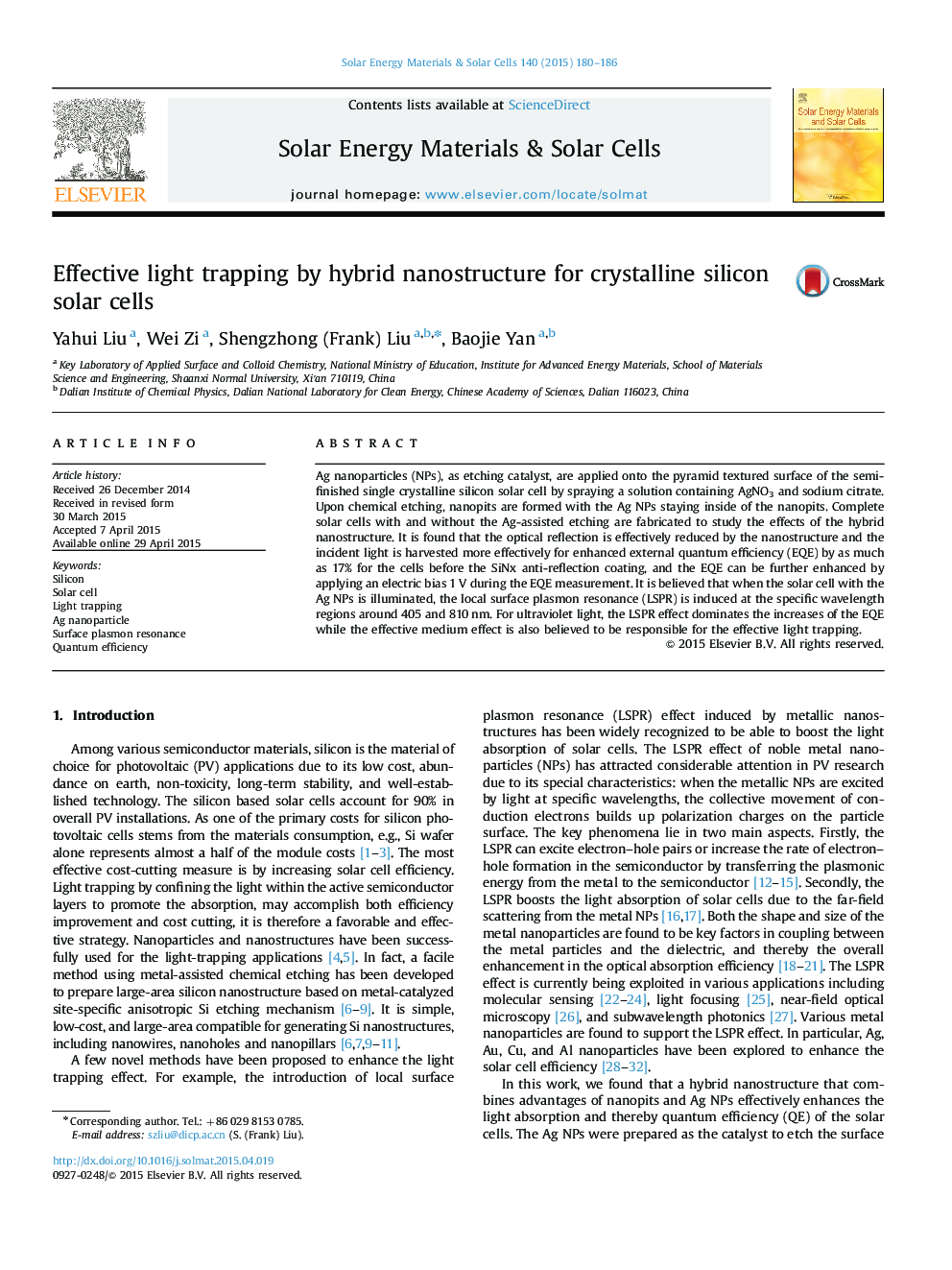| Article ID | Journal | Published Year | Pages | File Type |
|---|---|---|---|---|
| 6535164 | Solar Energy Materials and Solar Cells | 2015 | 7 Pages |
Abstract
Ag nanoparticles (NPs), as etching catalyst, are applied onto the pyramid textured surface of the semi-finished single crystalline silicon solar cell by spraying a solution containing AgNO3 and sodium citrate. Upon chemical etching, nanopits are formed with the Ag NPs staying inside of the nanopits. Complete solar cells with and without the Ag-assisted etching are fabricated to study the effects of the hybrid nanostructure. It is found that the optical reflection is effectively reduced by the nanostructure and the incident light is harvested more effectively for enhanced external quantum efficiency (EQE) by as much as 17% for the cells before the SiNx anti-reflection coating, and the EQE can be further enhanced by applying an electric bias 1Â V during the EQE measurement. It is believed that when the solar cell with the Ag NPs is illuminated, the local surface plasmon resonance (LSPR) is induced at the specific wavelength regions around 405 and 810Â nm. For ultraviolet light, the LSPR effect dominates the increases of the EQE while the effective medium effect is also believed to be responsible for the effective light trapping.
Related Topics
Physical Sciences and Engineering
Chemical Engineering
Catalysis
Authors
Yahui Liu, Wei Zi, Shengzhong (Frank) Liu, Baojie Yan,
